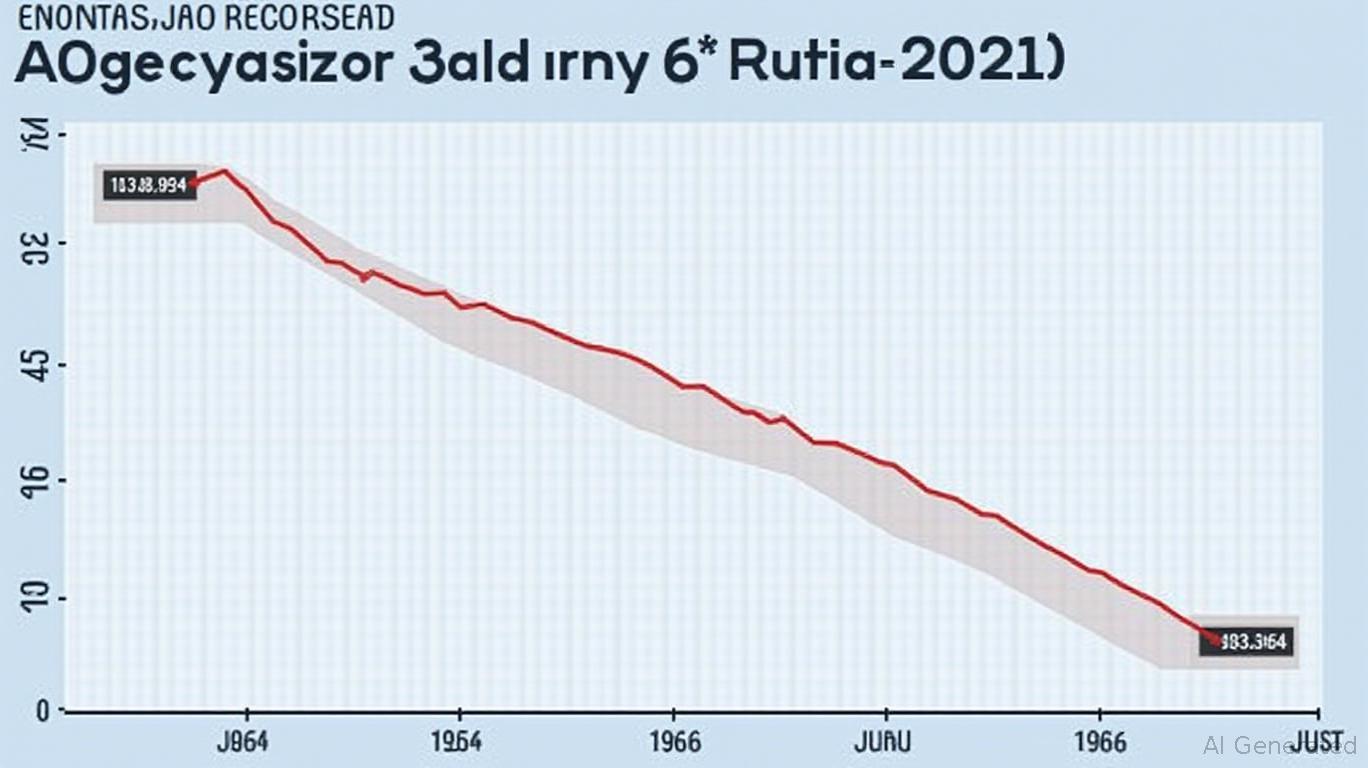Navigating Consumer Confidence Declines: Sector Rotation Strategies for Retail and Tech Investors
The U.S. consumer confidence index has plummeted to multiyear lows, signaling a growing unease about economic stability. With the Conference Board's June 2025 reading at 93.0—down 5.4 points from May—the decline underscores a broad-based pessimism about future income, jobs, and inflation. This shift has significant implications for investors, particularly in the retail and tech sectors. As consumers retrench, sector rotation strategies must prioritize defensive plays, resilient industries, and companies with strong balance sheets to weather potential recessionary headwinds.

The Deteriorating Outlook: Key Drivers and Sector Risks
The decline in confidence stems from three interlinked factors:
1. Trade Policy Uncertainty: Tariffs on Chinese goods, though temporarily paused, remain a top concern. Businesses face rising input costs, which are passed on to consumers, squeezing discretionary spending power.
2. Erosion of Income Expectations: The Expectations Index (now at 69.0) is below recession thresholds, with consumers less optimistic about future income and job availability despite a still-robust labor market.
3. Inflation Lingering: While 12-month inflation expectations fell to 6.0%, they remain elevated. Persistent price pressures, particularly in staples, are forcing households to prioritize essentials over discretionary purchases.
This dynamic is already reshaping consumer behavior. Write-in responses to surveys highlight a stark divide: Wealthier households are saving more, while lower-income groups are deferring purchases or dipping into savings. Retailers catering to discretionary spending—luxury goods, home furnishings, or non-essential electronics—face immediate headwinds.
Retail Sector: Winners and Losers in a Cautionary Environment
The Conference Board data reveals a divergence in purchasing intentions:
- Autos: Steady demand at high levels (since December 2024) suggests resilience here, likely due to pent-up demand and strong financing terms.
- Housing: Declining home buying plans reflect broader economic uncertainty and rising mortgage rates.
- Appliances/Electronics: Mixed trends, with appliances seeing slight gains but electronics lagging, point to a shift toward necessity over luxury.
Investment Takeaway: Rotate out of cyclical retail stocks (e.g.,
, home improvement retailers) and toward defensive staples. Companies with pricing power in essentials, like household goods or pharmaceuticals, are better positioned to maintain margins amid inflation.Tech Sector: Navigating the Divide Between Hardware and Services
The tech sector is less directly impacted by consumer spending cuts but faces its own challenges.
- Hardware Sales: Declining big-ticket purchases (e.g., appliances, electronics) could hurt companies reliant on consumer demand.
- Cloud and SaaS: Enterprise software and cloud services remain resilient, as businesses prioritize cost efficiency and digital transformation.
The Conference Board noted a slight improvement in stock market optimism (45.6% expect rising prices), suggesting investors still see tech's long-term potential. However, companies with high debt loads or reliance on discretionary spending (e.g., consumer electronics firms) face valuation risks.
Investment Takeaway: Focus on tech companies with strong balance sheets and recurring revenue streams (e.g.,
, cybersecurity). Avoid hardware firms with heavy consumer exposure unless they have diversified revenue models.The Labor Market Paradox: Strength Now, Weakness Ahead
Despite a present situation index of 129.1 (still positive), the labor market's forward-looking metrics are cooling. The “jobs plentiful” vs. “jobs hard to get” differential has narrowed to a five-year low, signaling a softening in hiring sentiment. This creates a paradox:
- Current Stability: Consumers still report solid family finances, supporting essential spending.
- Future Risks: A rising share of households anticipates a recession, with 57% expecting higher interest rates—a drag on borrowing-dependent sectors like housing and auto loans.
This divergence argues for a cautious stance. Investors should favor companies insulated from consumer spending volatility and capable of thriving in slow-growth environments.
Sector Rotation Strategies: Positioning for Uncertainty
- Rotate into Defensive Sectors:
- Healthcare: Defensive demand for and pharmaceuticals.
- Utilities/Infrastructure: Steady cash flows and low correlation with economic cycles.
Consumer Staples: Essential goods retain demand regardless of income trends.
Target Resilient Tech Subsectors:
- Cloud/SaaS: Recurring revenue and enterprise demand.
- Cybersecurity: A non-discretionary need for businesses.
AI/Big Data: Long-term secular trends unaffected by short-term sentiment.
Avoid Cyclical Plays:
Luxury retail, homebuilders, and hardware manufacturers with thin margins or heavy consumer exposure.
Prioritize Balance Sheets:
Companies with strong cash reserves, low debt, and flexible capital structures can navigate downturns. Examples include Microsoft (cloud dominance), Procter & Gamble (staples pricing power), and Amgen (healthcare stability).
Conclusion: Prepare for a Cautionary Landscape
The decline in consumer confidence is a clear warning: investors must pivot to sectors and companies that thrive in low-growth environments. Retail and tech are not monolithic; within each, defensive and resilient subsectors offer shelter. By rotating into staples, enterprise tech, and companies with financial fortitude, portfolios can withstand near-term uncertainty while positioning for long-term opportunities. As the Conference Board data shows, the future is uncertain—but prepared investors will outlast the storm.

Comments
No comments yet